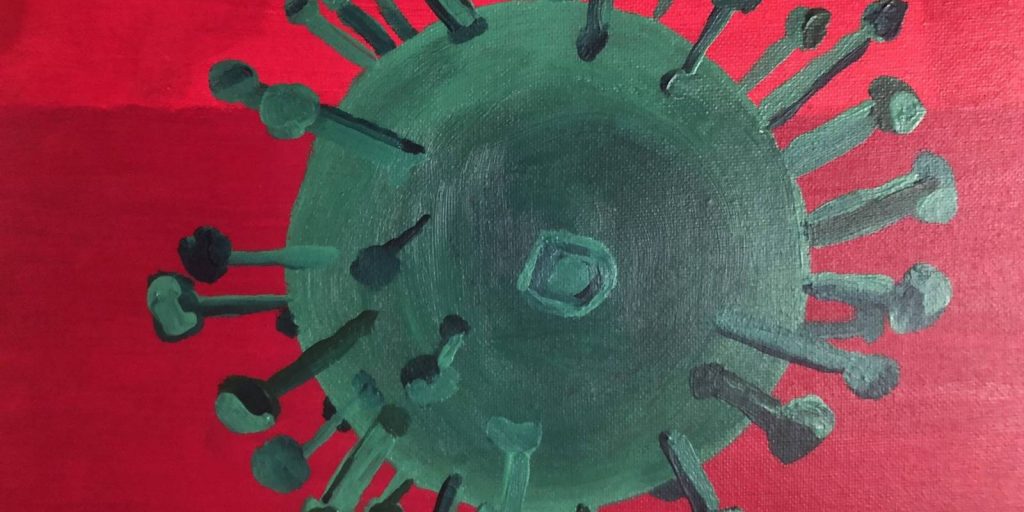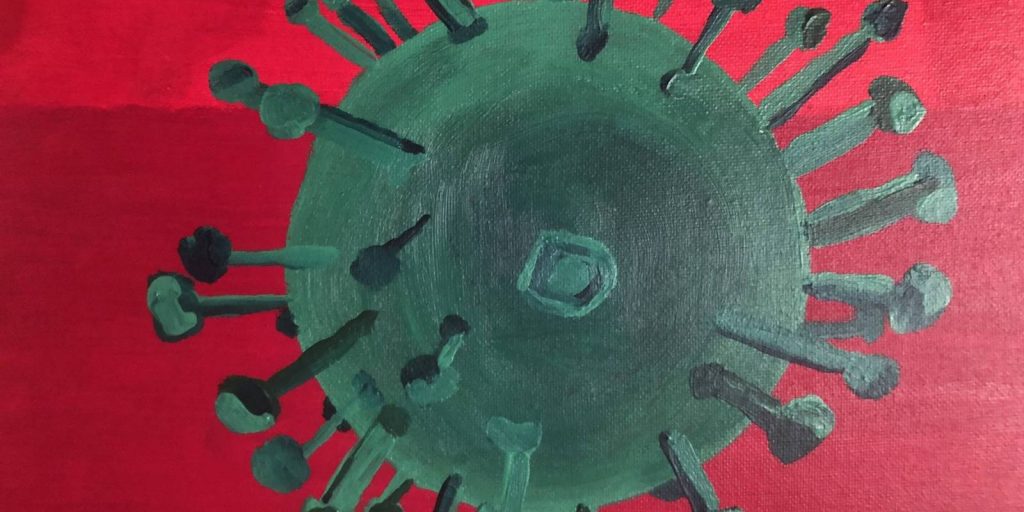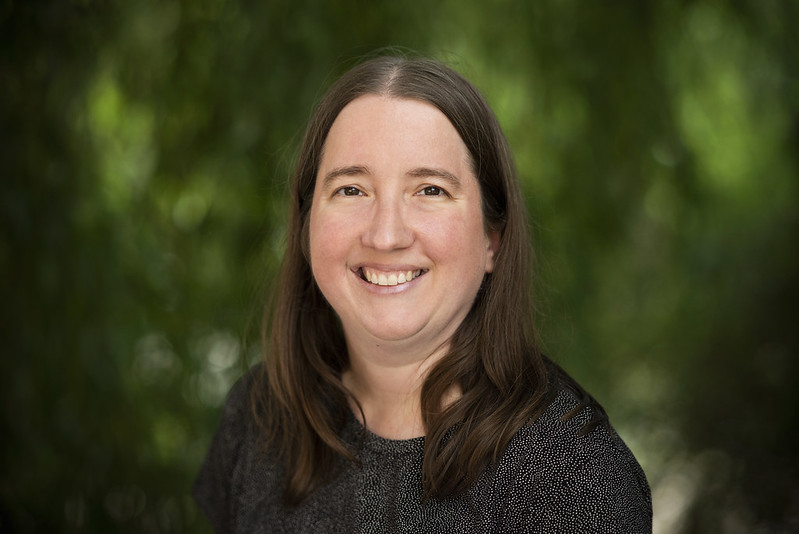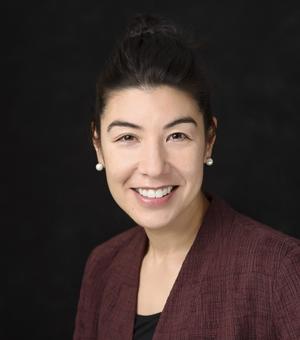Webinar video available

If you missed yesterday’s webinar with Ida Milne, you can watch it here.
Weekly Zoom seminars held by invited international pandemic researchers.

If you missed yesterday’s webinar with Ida Milne, you can watch it here.

Next week, Mathias Mølbak Ingholt, a PhD student at PandemiX Center, Department of Science and Environment, Roskilde University, Denmark will present in our webinar series:
Occupational characteristics and spatial differences during an intermittent fever epidemic in early 19th century Denmark.
In the 1780’s, the high-mortality regime with frequent mortality shocks in the form of epidemics, famines and wars ended in Denmark. The 19th century is characterized as a century of declining infant- and child mortality, improving life expectancy and population growth. One event however contradicts this overall pattern: a mortality crisis in eastern Denmark that began in 1826 and ended in an explosive epidemic in the late summer and fall of 1831. In some villages, over 10% of the population died, and case fatality rates were as high as 60% some places. The epidemic began at the same time across larger geographical areas, and there is no traceable diffusion. In its time, it was labelled an “intermittent fever” epidemic – a diagnosis later associated with malaria. The theory of malaria has however been rebuked, and it has instead been suggested that it was a mass-infection of mold (Manniche, 1997). Despite being a demographic anomaly reminiscent of the high-mortality regime, the epidemic remains understudied by demographers. In this article, I study the spatial differences in mortality during the epidemic and the occupational characteristics of its victims.
Forgetting and Remembering the Great Flu: Collecting and Shaping Narratives

The 1918-19 influenza pandemic was for many years underrepresented in historiography, until Alfred Crosby and Richard Collier’s groundbreaking works stimulated reassessments of its impact. But how was it remembered at community or individual level? In this paper, Ida Milne, a social historian of disease, explores the history of her own collecting of 1918-19 flu memory in Ireland, looking at how it has undergone significant sea changes since she first recorded interviews with survivors in 2006. What might these changes indicate for Covid-19 memory?
Ida Milne is European History lecturer at Carlow College, Ireland, a visiting research fellow at Trinity College, Dublin, chair of the health and environment strand of the European Social Science History Conference and co-chair of the international committee of the Oral History Association. Her monograph, Stacking the Coffins, Influenza War and Revolution in Ireland 1918-19 was published by Manchester University Press in 2018, and was awarded a Choice Reviews OATS (Outstanding Academic Titles) in 2019.

PANSOC’s Marie Skłodowska-Curie Actions (MSCA) candidates will be presenting their proposals and preliminary insights. We hope you will join us to learn more about these exciting projects! This week only, we will have a delayed start at 1700 CET. Contact jessicad@oslomet.no if you need a Zoom link.
Alexandra (Sasha) Blinkova, Herzen State Pedagogical University (St. Petersburg)
Religion and COVID-19 in social media: a case of Russia and Belarus
COVID-19 is not the first pandemic the world has faced but it is the first pandemic that has changed religious practices and religious authorities’ structures worldwide due to the use of social media platforms in dissemination of religious views and services. Russia and Belarus, two Eastern European, predominantly Russian-speaking, former Soviet countries, are not unique in how religious sources of information influence the part of society that tends to rely on them in times of overwhelming stress and uncertainty like pandemic. Nevertheless, Russia and Belarus are an intriguing case for comparison because while they are both predominantly Orthodox Christian societies and belong to the same religious organization, i.e., the Russian Orthodox Church (Moscow Patriarchate), the level of societal trust in church authorities in Russia and Belarus varies greatly. In particular, due to dramatic changes in Belarus for political reasons, information coming from official religious sources is expected to be considered less trustworthy and valuable by the recipients. This project will explore whether this hypothesis also applies to unofficial religious voices on social media platforms, such as bloggers (both clergy and lay), journalists, and celebrities. Moreover, it will determine whether religious infodemic, an epidemic of religious information in this case related to coronavirus, has a detrimental effect on shaping attitudes towards vaccination and recognizing COVID as a real health risk for everyone.
Ana Vuin, Charles Darwin University
Regional Health Professional’s experiences during the COVID-19 crisis: Is there a mismatch in between the theory and practice?
COVID-19 Pandemic affected communities worldwide and had a massive impact on the livelihoods of both urban and rural populations and their physical and mental well being. However, there is a limited understanding of challenges regional practitioners and allied health professionals go through during the COVID-19 Pandemic. The available literature is more focused on the ‘general’s public trust, confidence, mental health and challenges’ rather than exploring such matters on a healthcare (provider) level. Even before COVID-19 Pandemic, Regional communities were struggling with the limited numbers of health facilities, healthcare options, reduced staff, challenging process of recruitment and retention, mental health support (including building rapport in such circumstances), so the additional burden of Pandemic can only contribute to the already existing challenges healthcare professionals experience in these areas. My research aims to explore the initiatives and strategies that were developed to support the health professionals during these times, and compare them with the lived experiences of Norwegian (and potentially Swedish) regional health professionals amid COVID-19 Pandemic. The common knowledge is that the realities of ‘regional or rural’ living are different from urban, therefore the healthcare professionals practicing in such areas will have significantly different experiences too. For that matter, it is necessary to hear their voices and explore their perspectives, challenges, and coping mechanisms as they are the backbone of these communities- providing healthcare services to vulnerable populations.
Racial Disparities in Mortality During the 1918 Influenza Pandemic in United States Cities:
Videoer PANSOC – OneDrive (sharepoint.com)


Our webinar series is returning for the fall semester! Please join us for the first talk on August 19 at 1600 CET. Elizabeth Wrigley-Field, University of Minnesota, and Martin Eiermann, University of Berkeley will present: “Racial Disparities in Mortality During the 1918 Influenza Pandemic in United States Cities”
Abstract:
The 1918 influenza pandemic stands out for its extreme virulence and unusual age pattern of mortality. A third feature merits the same level of scrutiny and scientific prominence: against a historical backdrop of extreme racial health inequality, the pandemic produced strikingly small ratios of nonwhite to white influenza and pneumonia mortality in the United States. We provide the most complete account of these racial disparities in U.S. cities in 1918 to date, showing that they were almost uniformly small across cities. We also advance and evaluate four potential explanations for this result, including racial differences in: (1) socio-demographic factors like segregation, (2) exposure to city-level implementation of non-pharmaceutical interventions (NPIs), (3) exposure to the spring 1918 “herald wave,” and (4) early-life exposures to other influenza strains that could have resulted in differences in immunological vulnerability to the 1918 flu. While we find little evidence for explanations related to residential segregation, NPIs, or partial immunity induced by the herald wave, our results suggest that racial variation in early-life exposure to influenza—in particular the 1890-1892 pandemic—likely shrank racial disparities during the 1918 pandemic. We also find suggestive evidence consistent with a behavioral response to the herald wave. In providing new evidence of the patterns and potential drivers of racial inequality in mortality during the 1918 pandemic, our study underscores the importance of considering interactions between the natural history of a particular microbial agent and the social history of the populations it infects in the study of infectious disease patterns.
Last week, MSCA fellow Jessica Dimka presented her project on disability as a risk factor during the 1918 pandemic. Watch the video here:

Jessica noted several sources that helped determine disease values used in her simulation model (and similar models for Newfoundland communities – see work by her PhD supervisor, Lisa Sattenspiel, and their colleagues). These sources include:
“‘An Avalanche of Unexpected Sickness’: Institutions and Disease in 1918 and Today.” Chelsea Chamberlain. June 23, 2020. Society for Historians of the Gilded Age and Progressive Era. https://www.shgape.org/an-avalanche-of-unexpected-sickness/
Ferguson, N. M., Fraser, C., Donnelly, C. A., Ghani, A. C., & Anderson, R. M. (2004). Public health risk from the avian H5N1 influenza epidemic. Science, 304(5673), 968–969. https:// doi.org/10.1126/science.1096898
Mills, C. E., Robins, J. M., & Lipsitch, M. (2004). Transmissibility of 1918 pandemic influenza. Nature, 432, 904–906. https://doi.org/10.1038/nature03063
The 10th and last webinar this spring is held by associate professor at University of Oxford, Erica Charters on June 10 at 1600-1700 (CET).
Please send e-mail to masv@oslomet.no to get the zoom-link
See Charters personal page here: Dr Erica Charters | Faculty of History (ox.ac.uk)

Blurb: As COVID-19 drags on and vaccines seem to promise widespread immunity, the world’s attention has turned to predicting how the present pandemic will end. Yet how do societies know when an epidemic has ended and normal life can resume? What criteria and markers indicate an epidemic’s end? Who has the insight, authority, and credibility to decipher these signs? Although researchers have paid a great deal of attention to the origins of epidemics and to the climactic high points of outbreaks, they have paid little attention to how epidemics actually end. This talk will redirect attention to the ending of epidemics, making use of historical and other disciplinary research to provide a tentative framework for outlining how epidemics end, as part of the interdisciplinary project ‘How Epidemics End’, based at the University of Oxford.
COVID-19 has shown that people with disabilities are at increased risk of severe illness and death during pandemics. Interacting biological and social factors likely contribute to these differences. For example, risks are especially high for those living in institutions.
Yet, few researchers have studied the experiences and outcomes of disabled people during past pandemics, including the 1918 influenza pandemic. As part of the webinar series of the Centre for Research on Pandemics & Society at Oslo Metropolitan University, Jessica Dimka, Ph.D., will present the main results of her Marie Skłodowska-Curie fellowship in her talk, “Disability, Institutionalization, and the 1918 Flu Pandemic: From Historical Records to Simulation Models.”
Key points of the talk include:
The talk will conclude with a discussion of the relevance of this work for COVID-19 and future pandemics, including areas of future research, policy implications, and the disabling effects of pandemics.
For a Zoom link, please contact jessicad@oslomet.no or masv@oslomet.no
The talk will be in English, and International Sign interpretation is arranged. For general questions about the webinar including accessibility concerns, please contact jessicad@oslomet.no or ninha@oslomet.no

On May 6, doctoral fellow Sushma Dahal presented on her work with Dr. Gerardo Chowell. Watch “Excess mortality patterns during influenza pandemics” here:
